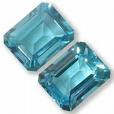The earliest forms of jewelry were items that early humans found naturally, such as shells orbits of bones. Early grave sites have also revealed that pre-historic man buried his dead with flowers and with carved ivory beads. These primitive beads would have taken at least an hour each to make.
Early man also might have found bits of turquoise that occurred naturally in areas of Turkey and North America. The pearlescent swirls found inside an abalone or conch would have also been used as jewelry.
They might have also found the earliest types of precious gems in the form of natural crystals, such as quartz or diamonds. Crystals are solid substances where the molecules are arranged in a symmetrical fashion, and they generally fall into one of six shapes: Isometric, or cubic crystals are shaped like blocks and are symmetrically shaped. An example of an isometric crystal would be pyrite. This is also called fool’s gold because it has a metallic yellow or brassy color similar to gold.
Isometric, or cubic crystals are shaped like blocks and are symmetrically shaped. An example of an isometric crystal would be pyrite. This is also called fool’s gold because it has a metallic yellow or brassy color similar to gold.
Tetragonal, where the crystals are shaped like four-sided prisms and pyramids. An example of a tetragonal crystal is the zircon. Hexagonal crystals are shaped like six-sided prisms, or pyramids. An example of this kind of crystal is the beryl, which includes gems like emeralds and aquamarines.
Hexagonal crystals are shaped like six-sided prisms, or pyramids. An example of this kind of crystal is the beryl, which includes gems like emeralds and aquamarines.
Orthorhombic crystals. An example of an orthorhombic crystal is topaz. Topaz can come in a variety of colors, although the mostly highly prized is a deep amber color. At one time, topaz was much more valuable, until rich veins of it were found in Brazil, which devalued the market. Monoclinic crystals are short and stubby, with tilted faces at each end. Monoclinic crystals include gypsum.
Monoclinic crystals are short and stubby, with tilted faces at each end. Monoclinic crystals include gypsum.
Triclinic crystals are usually flat with sharp edges but no right angles. Each crystal has three unequal axes. An example of triclinic crystal is feldspar.
Tuesday, January 29, 2008
Minerals are Crystals
Posted by
Admin
at
11:22 PM
![]()
Subscribe to:
Post Comments (Atom)



No comments:
Post a Comment